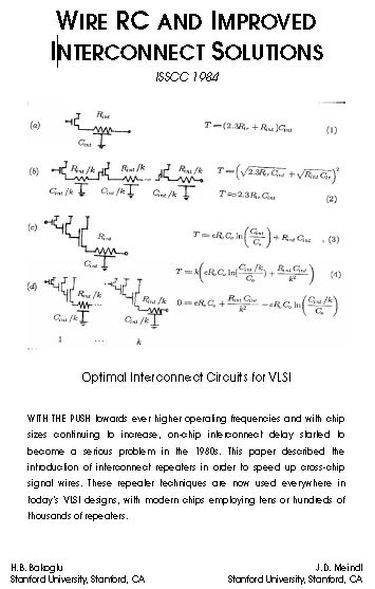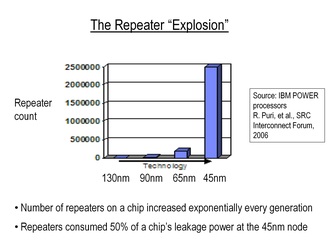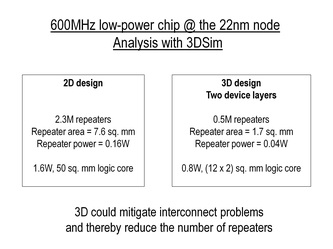
In 2003, the International Solid State Circuits Conference (ISSCC) created a museum of the best papers in it's 50 year history. And you know what? Bakoglu's paper on repeaters at the 1984 ISSCC was selected among these, along with the first CMOS circuits and the first microprocessors! You can see the ISSCC museum's exhibit on Bakoglu's paper alongside. What happened to this gifted grad student who did such great things? He joined IBM after Stanford, spent 10 years there and rose to become Director of Personal Systems and Multimedia. He then went to Sony, where he was Senior VP of it's US R&D center. Bakoglu's next career move was the most interesting... In the late 1990s, during the dot-com boom, he joined a networking start-up as VP of Engineering, made a bucket-load of money, and decided to retire in his late 30s! He bought a home on a beach in Hawaii, and has lived there ever since :-) I heard he recently got bored just sitting at home, and started teaching at the University of Hawaii.
What's the situation with repeaters today? We have millions of repeaters in today's chips... Please find below a graph from IBM where they show the number of repeaters in POWER processors as a function of scaling. Between the 65nm and 45nm nodes, the number of repeaters increased by an order of magnitude! Also, IBM says repeater leakage formed more than 50% of the total leakage of their 45nm chips. If this "explosion" in number of repeaters continues, repeaters will dominate performance, power and die size of semiconductor chips 10 years from now. Interconnects degrade with scaling for two reasons: (1) Their cross-sectional area decreases while their lengths frequently don't scale, and (2) Their resistivity increases due to surface scattering, grain boundary scattering and diffusion barrier effects. Transistors improve with scaling - we are essentially using these improved transistors as repeaters to handle interconnect problems.
- By Deepak C. Sekar











 RSS Feed
RSS Feed